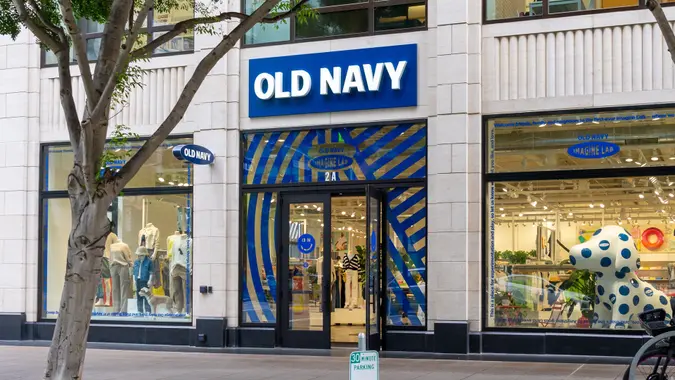Is the Era of Thrifting Officially Over?

Commitment to Our Readers
GOBankingRates' editorial team is committed to bringing you unbiased reviews and information. We use data-driven methodologies to evaluate financial products and services - our reviews and ratings are not influenced by advertisers. You can read more about our editorial guidelines and our products and services review methodology.

20 Years
Helping You Live Richer

Reviewed
by Experts

Trusted by
Millions of Readers
Whether you’re doing it because you’ve run out of beer money, because you love that eureka moment of finding a hidden gem or to save the planet from fast-fashion, shopping at thrift stores can be a great way to spend a Saturday. Yet unlike past eras, when thrift stores were as rare as they were funky, thrifting is now mainstream big business — and that might just be its demise.
How big is the thrifting biz?
Well, according to the 2023 annual report by ThredUP, an online thrifting site, the global secondhand clothing market grew by 28% in 2022 to become a $177 billion industry. By the end of 2024, they predict that number to balloon to $248 billion and comprise 10% of the overall apparel market. In the U.S. alone, secondhand clothing sales grew 5 times faster than the retail clothing sector in 2022 and is expected to reach $70 billion by 2027.
Now, you might be wondering why thrifting is so popular, especially in a world where celebrities, red carpets and “bling” is more prevalent than ever. Inflation is certainly one possible factor. However, a more in-depth explanation, offered by Future Proof, a content creating team that studies brands and products, is that we are living through times of social upheaval and uncertainty that historically have resulted in a counter-cultural shift that included thrifting.
Consider the Data
During the 1950s and ’60s, young people burned bras and shredded ties in favor of secondhand clothing to create a bohemian style that protested mainstream culture, the draft and the Vietnam War. During the 90s, the grunge rock movement adopted the same thrift store styles to rebel against corporate America and the hyper-consumerism of the 80s. According to Future Proof, it’s happening again in recent years in response to the chaotic times in which we live.
But here’s the difference. Thanks in part to the internet, the prevalence of social media and the ease with which brands can market to consumers, the thrifting trend is being appropriated by the mainstream fashion and apparel industry. Retailers such as Eileen Fisher, Patagonia and REI, to name only a few, now sell used clothes. Then there are the online businesses dedicated to the thrifting trend, such as ThredUp, Poshmark, Tradesy, Dpop and many more.
A Matter of Perspective
While this might sound like an outstanding argument for why the era of thrifting is anything but over, that really depends on your perspective. Yes, officially thrifting, or selling used clothing, is more robust than ever and, especially when it comes to environmentally conscious brands such as Patagonia, a great thing for sustainability. But with the gentrification and commercialization of thrifting taking over the planet, the spirit of thrifting might be on life support. But of course, when it does finally die, it will look very on-trend.
 Written by
Written by  Edited by
Edited by 

























